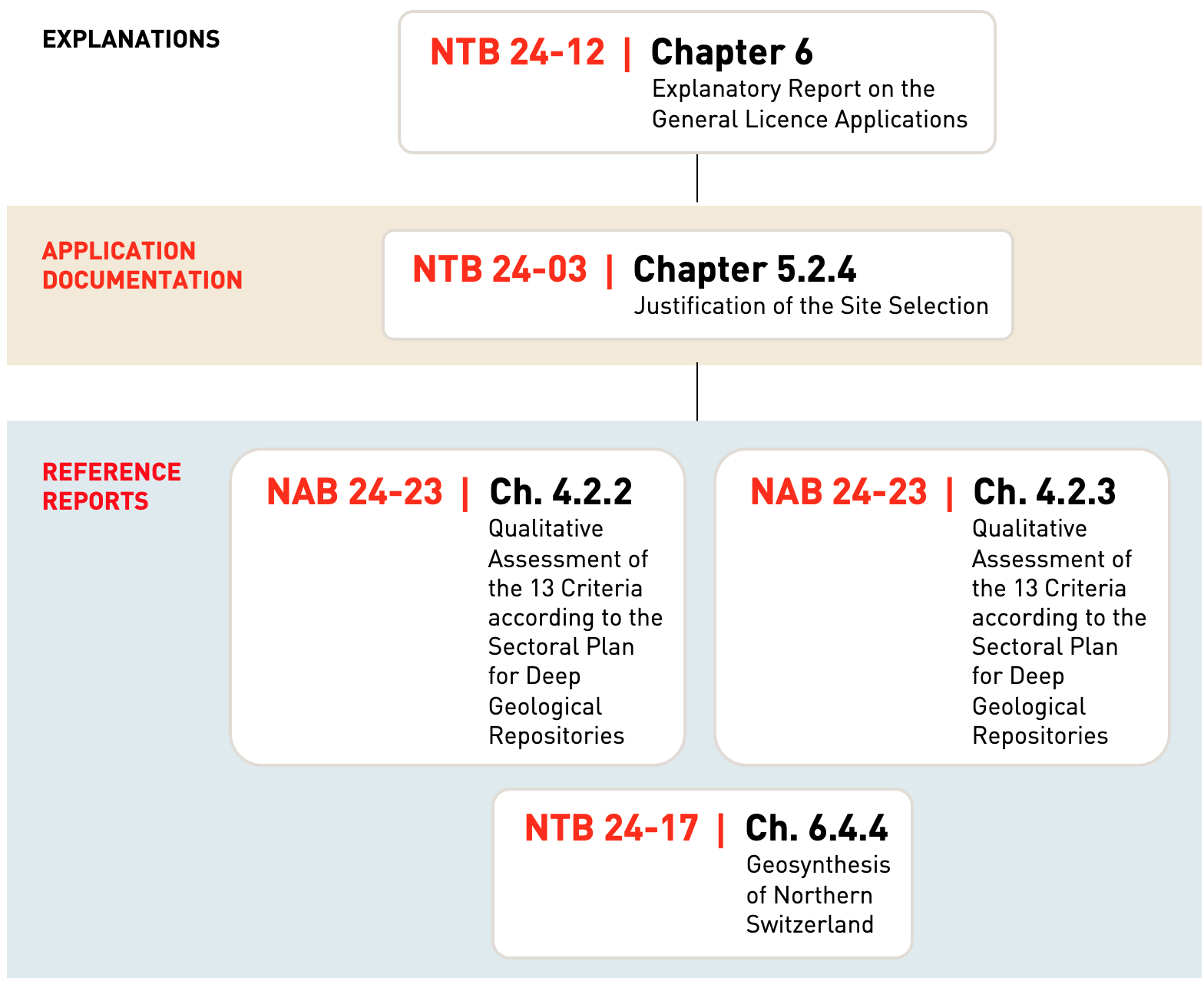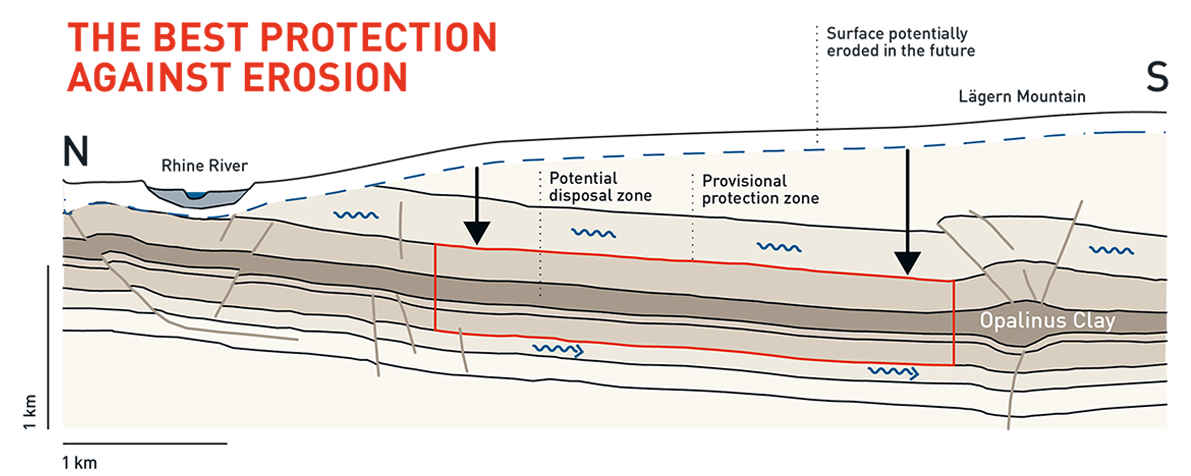 The best protection against erosion is one of the central arguments for selecting Nördlich Lägern as the site for a deep geological repository (Explanatory Report on the General Licence Applications, Chapter 6).
The best protection against erosion is one of the central arguments for selecting Nördlich Lägern as the site for a deep geological repository (Explanatory Report on the General Licence Applications, Chapter 6).
The argument is explained in the report Begründung der Standortwahl (“Justification of the Site Selection” (in German), NTB 24-03, Section 5.2.4). Observations on the predictability of long-term changes in the deep geological repository system show that, even under unfavourable assumptions, the long-term stability of the geological barrier in Nördlich Lägern is very favourable, which is confirmed in a cross-comparison between the three siting regions.
The reference report Qualitative Bewertung der 13 Kriterien gemäss Sachplan geologische Tiefenlager (“Qualitative Assessment of the 13 Criteria according to the Sectoral Plan for Deep Geological Repositories” (in German), NAB 24-23) characterises the impacts of erosion (Section 4.2.2) and repository-induced effects (Section 4.2.3) on the containment-providing rock zones and shows how the argument is substantiated by means of a qualitative assessment of the containment-providing rock zones on the basis of pre-defined criteria relating to safety.
The likelihood of the deep geological repository being uncovered within the next one million years can be regarded as extremely unlikely in all siting regions but is even one order of magnitude lower in Nördlich Lägern. Nördlich Lägern is best protected against future erosion. Jura Ost is susceptible to the evolution of the local topography and changes in the river courses. As a result, in some scenarios, the overburden could decrease to a thickness of less than 200 metres (Geosynthesis of Northern Switzerland, NTB 24-17, Section 6.4.4).

